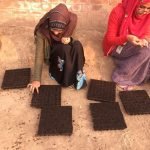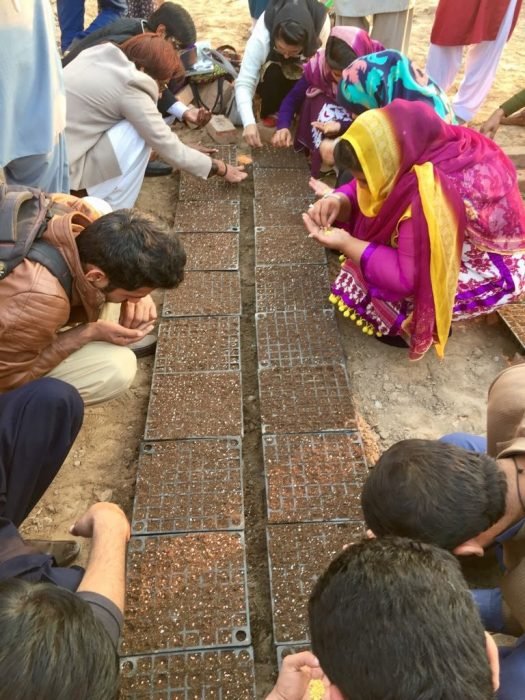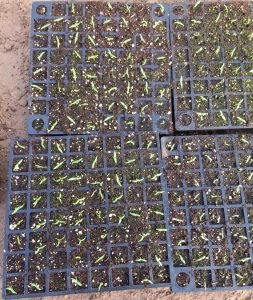
People who eat fruits and vegetables as part of their daily diet have a reduced risk of many chronic diseases. Vegetables are important part of healthy eating and provide a source of many nutrients, including potassium, fiber, folate (folic acid) and vitamins A, E and C.
Vegetables are cash crops such crops require regular irrigation, unlike most staple foods such as grains and in the vicinity of big cities most of vegetables are grown on sewerage water, these vegetables contain residues of heavy metals and other toxic compound which are causing many chronic diseases like cancer, diarrhea and hepatitis etc in human being. Sewerage water has a huge amount of nutrients we know of cases where farmers are fighting for the use of wastewater, even if there is fresh water available because they don’t have to pay for fertilizer while using sewerage water. So, there is dire need to promote kitchen gardening. In this regard Prof. Dr. Asif Ali, Vice chancellor Muhammad Nawaz Shareef University of Agriculture Multan started a project funded by AIP(Agriculture Innovation Program) and USAID that will provide quality seedlings of both normal and off season vegetables for kitchen gardening. The overall objectives of this project are:
- To promote kitchen gardening by establishing a system for provision of certified healthy nursery.
- To overcome the germination and season related problem of vegetable production.
- To build capacity for economical and clean (pesticide free) vegetable production, household saving.
- To build capacity of the agriculture graduates for entrepreneurship.

Almost all vegetables crops are propagated by seeds, except a few like sweet potatoes, asparagus, garlic, potatoes, which are propagated vegetatively. A nursery could be considered as a location where plants are cared for during the early stages of growth, providing optimum conditions for germination and subsequent growth, until they are strong enough to be planted out in their permanent place. Some vegetables require special cares during their early growth period. There are some vegetables with very small sized seeds. These are first sown in the nursery for better care and to combat with the time for field preparation and after about one month of seed sowing, It will provide ready to transplant nursery or ready to grow plants of different vegetables to promote kitchen gardening.

In Pakistan, vegetables (excluding Potato) were grown on a total area of 254 thousand hectares during 2016-17 (GOP, 2016-17) with a production of 311.1 thousand tones which is about 2.30 % of total crop area. Vegetables are comparatively rich source of vitamins and minerals, which are essential for the maintenance of good health and resistance against diseases.
This total duration of this project is 24 months. In this project Awareness programs in schools, girl colleges and women universities are started. As well as awareness campaign are also started on FM-101, Rohi TV and on other print and electronic media. Different type of competitions will be organized during this project with the aim to promote plant eating that include plant centric meal competitions, salad making competition etc. Anyone can purchase nursery plant by placing order on university website, from big departmental stores and towns of Multan like Prince, CSD shop and from town like wapda town.
This project will provide quality seedlings (for both normal and off season) for kitchen gardening. Nursery of cucurbit and other vegetable crops can be raised in small and large multipot reusable plastic trays. Seedling (about 25-30) of one vegetable can be grown in small tray whereas seedlings (about 70-80) of 4-6 vegetables of same season can be grown in large trays. These seedling trays are sold to the growers. This method is very simple and low cost of production. The protected structures of trays are easily handled in normal tunnel, control shed, and in transportation. For example, Seedlings of the desired cucurbits are raised in the first week of January up to mid of January and 30-50 days old seedlings are sold for transplantation in the open field from mid-February to first week of March.
The technology comprises of cost-effective techniques of raising of seedlings of economically useful vegetable crops that have been developed and standardized. The techniques involved are;
- Making/Using compost
- Preparation of potting medium
- Use of tunnel, use of shade nets

- Raising seedlings in small and large multipot trays
- Use of supplementary nutrition if required
- Hardening of seedlings etc.
- Packing
This technique ensures that a large number of seedlings can be raised in minimum space under optimized and controlled conditions. The seeds or cuttings are planted in trays filled with peat moss or compost. The wells in tray have hole in the bottom for leaching of extra water. The crops targeted for the plant nursery include the following:
| Structures | Summer (November- March) | Winter (August – December) |
| Multipot trays (Small) | Tomato, chili, pepper, brinjal | Cauliflower, cabbage, lettuce, Onion |
| Multipot trays (Large) | Cucurbits including gourds, pumpkin, vegetable Luffa, melons etc. | Off season vegetable nursery including tomato, cucumber, pepper, Onion etc. |
This article is collectively authored by Asif Ali Khan and Nabeel Ahmad Ikram Muhammad Nawaz Shareef, University of Agriculture, Multan, Pakistan.

